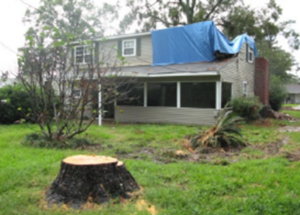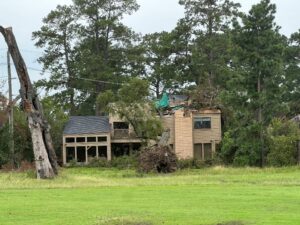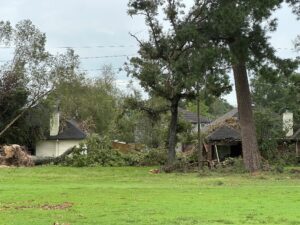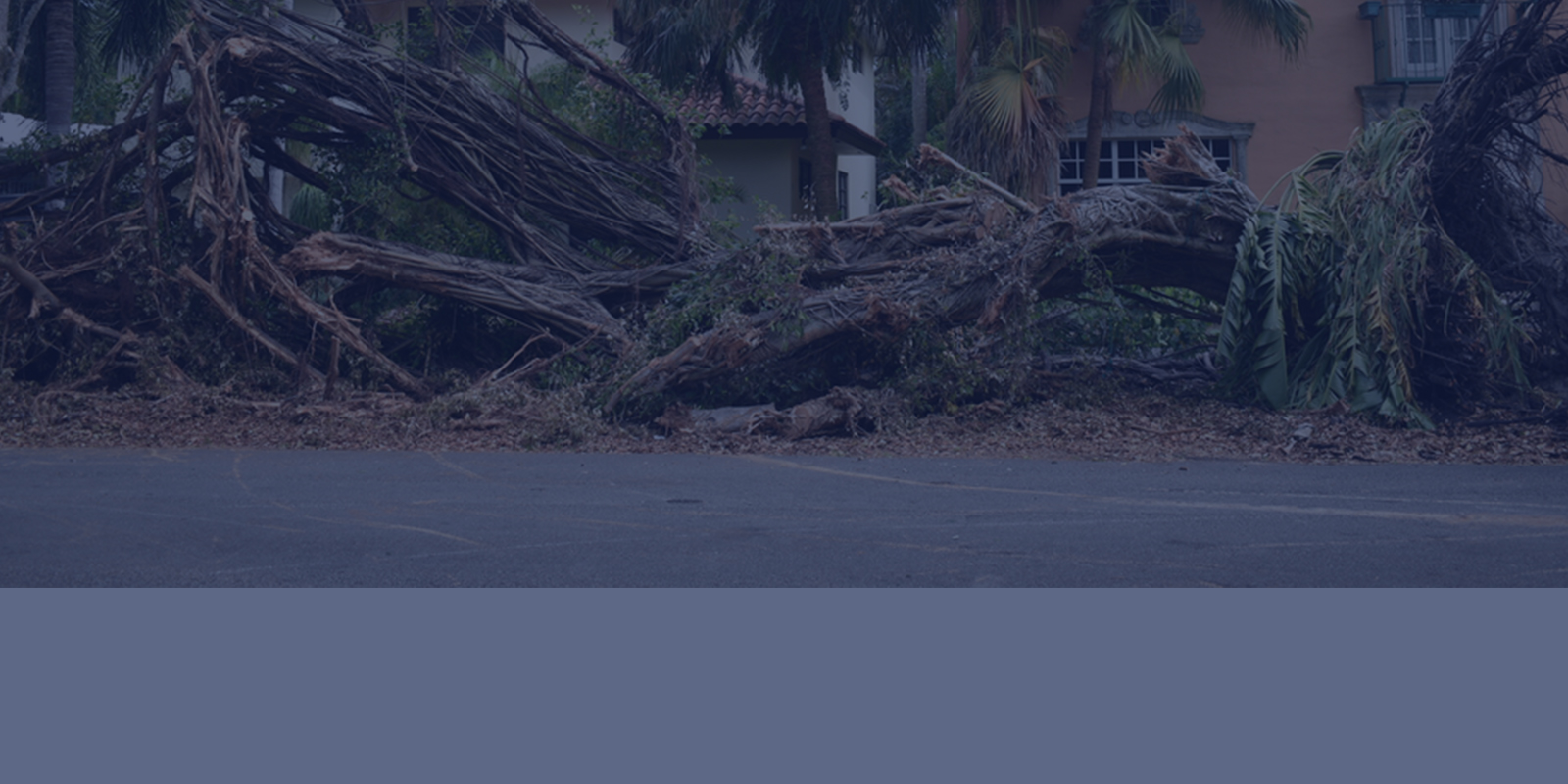Fallen trees and tree limbs are a common occurrence in areas affected by high winds, such as those from a hurricane. This can result in damage to power lines and impact damage to structures, with wood-framed residences being rather susceptible.
The potential for structural damage resulting from a tree impact is a function of the size of the tree and the type of structural framing affected. Impact from a large tree or limb can cause substantial instantaneous lateral and vertical forces on a structure, including localized sustained loads until the fallen tree debris is removed from the structure. These forces can be sufficient to damage or destroy structural framing members. Figure 1 shows the damage to a residence in Louisiana that was impacted by a relatively large tree during Hurricane Gustav in 2008.

Figure 1. Tree impact damage to a residential structure in Louisiana from Hurricane Gustav (2008).
However, wood-framed construction common in contemporary residential construction has the ability to redistribute the energy of the initial impact, often minimizing collateral damage. Even when there is damage at the impact location, the structural framing adjacent to, and in the vicinity of, the impact area often has sufficient strength and flexibility to resist the distributed impact force and the sustained loads from the fallen tree debris with little or no damage away from the impact.
The pattern of damage to non-structural elements or finishes attached to the structural framing may differ somewhat from the pattern of damage to the framing. Such elements and finishes that are relatively weak or inflexible may be unable to accommodate the movement or deflection of the structure from the impact, resulting in damage to the finishes at the impact area and even at some distance from the impact. Therefore, it is important to have a qualified and experienced professional review the impacted structure to properly assess the integrity of the framing and the extent of damages to framing and finishes.

Figure 2. Fallen tree(s) on a residence following Hurricane Beryl (2024).

Figure 3. Fallen trees and limbs following Hurricane Beryl (2024).
Figures 2 and 3 show downed trees and fallen limbs from the recent Hurricane Beryl in the Houston, Texas area, including some that have impacted structures. Nelson’s team of professionals routinely evaluate tree impact damage and other forms of damage that occur during windstorms and hurricanes to determine the extent of related distress and provide conceptual remedial solutions.

